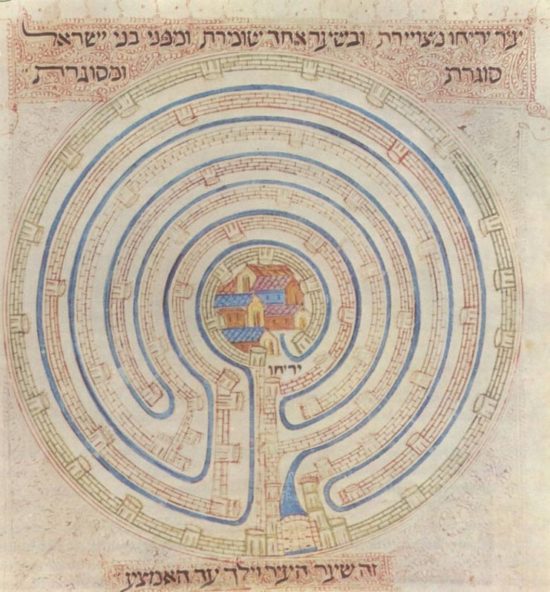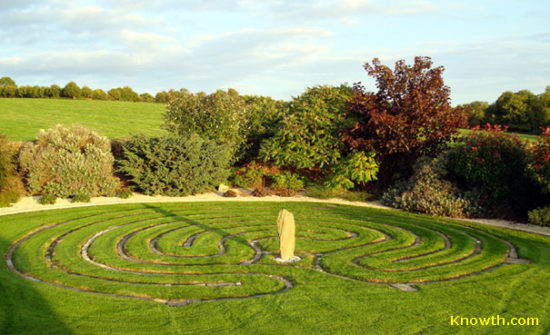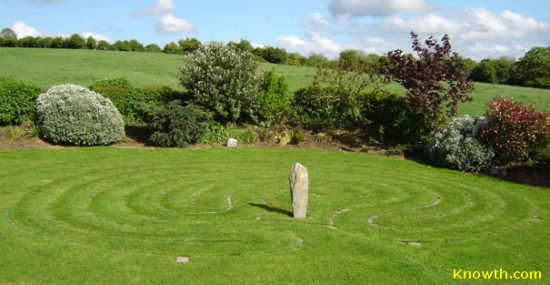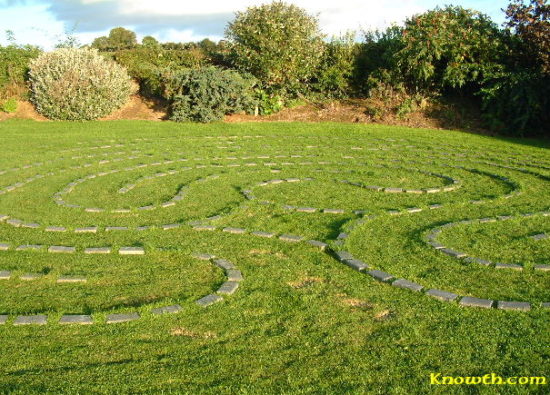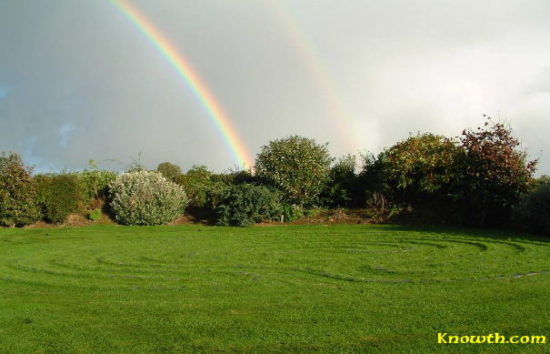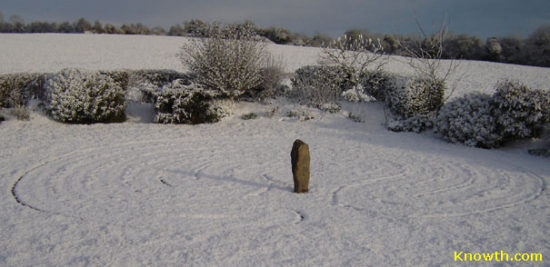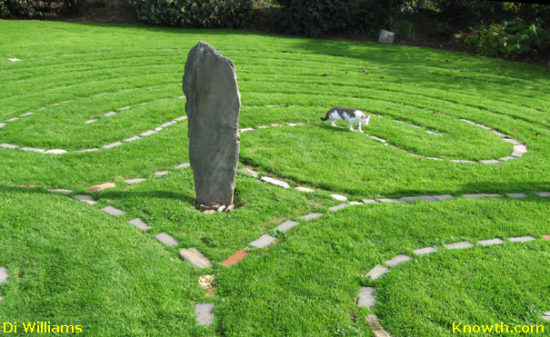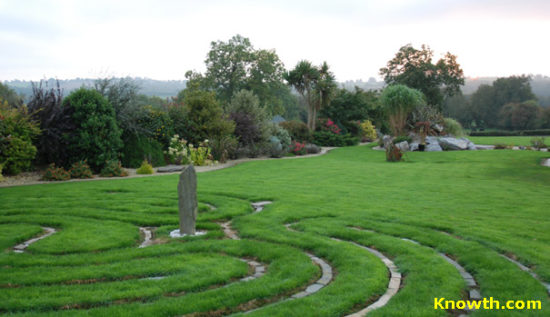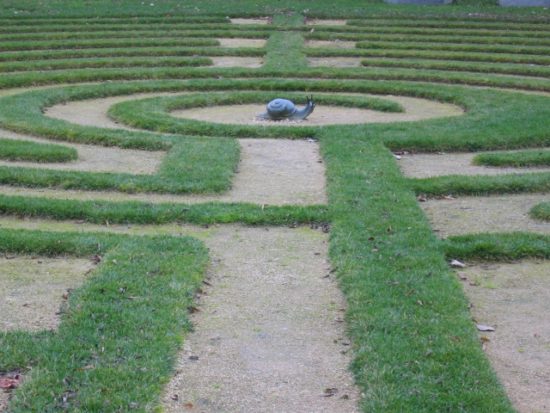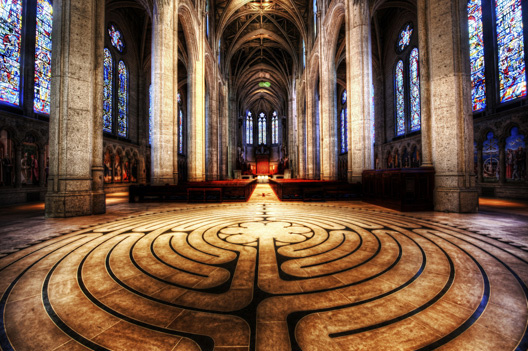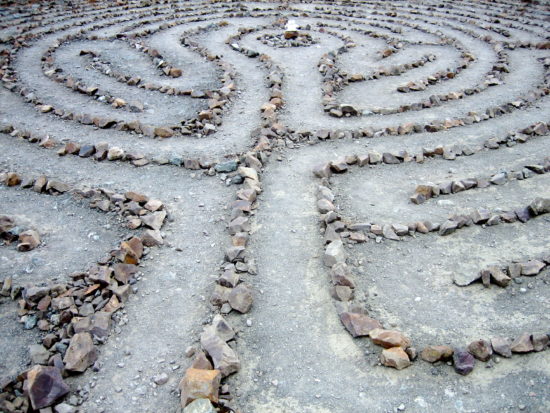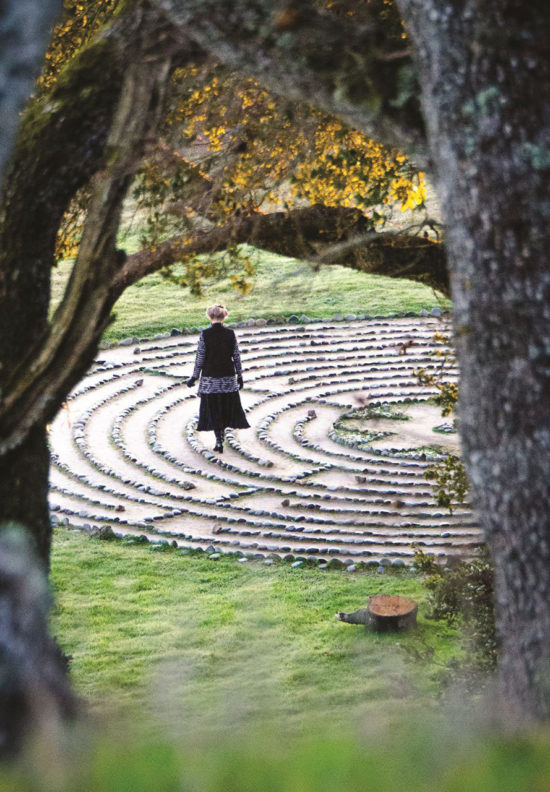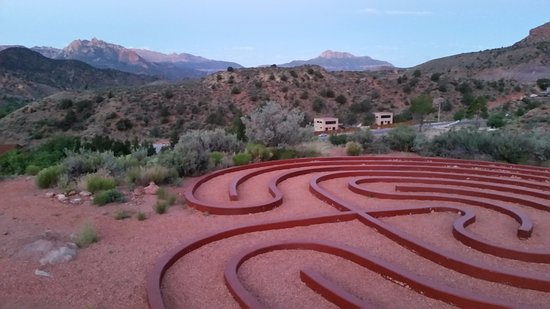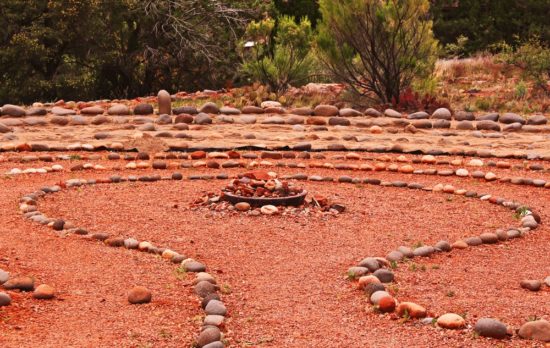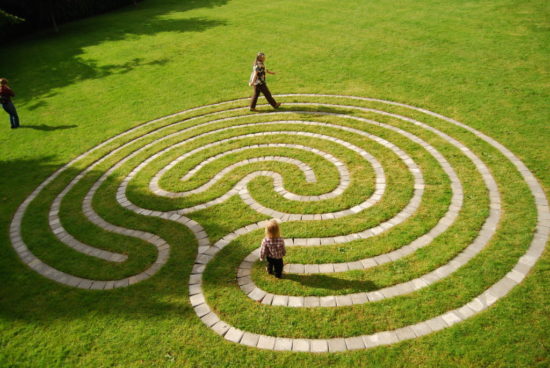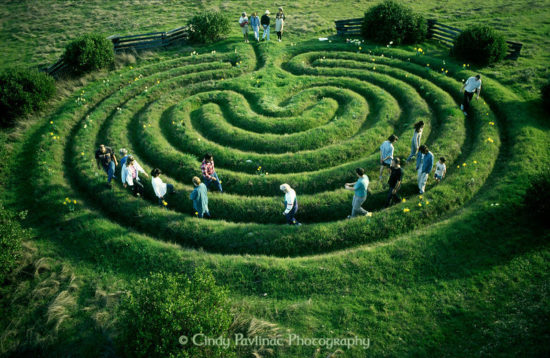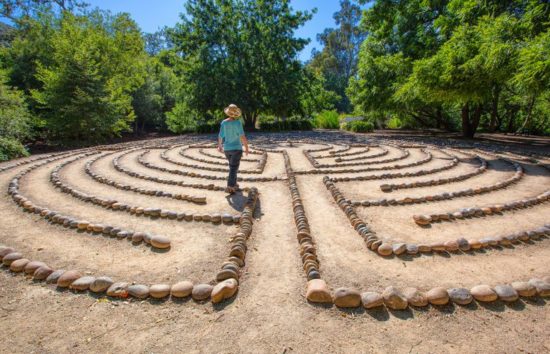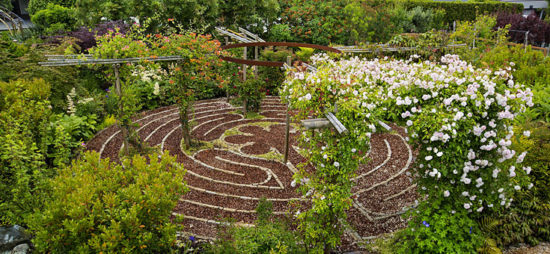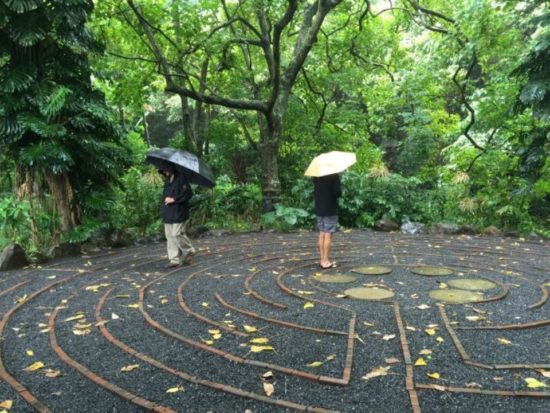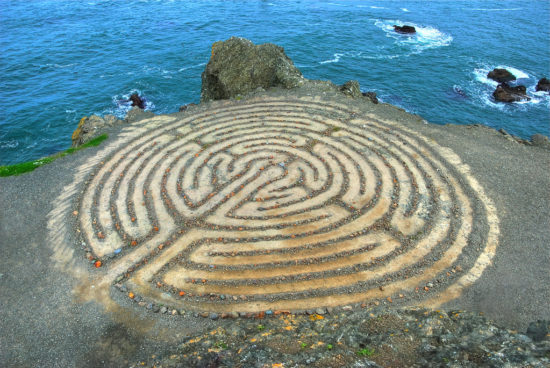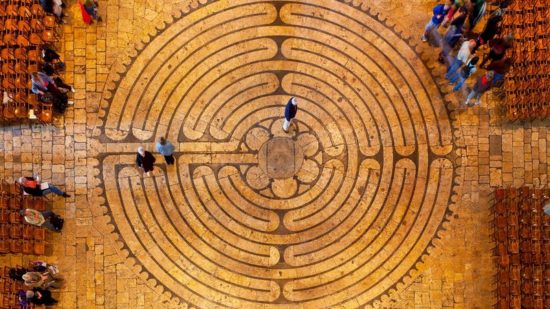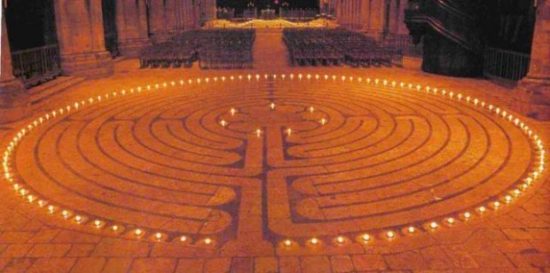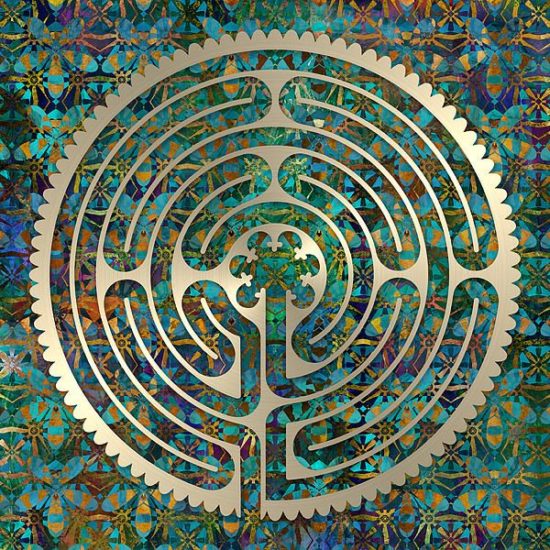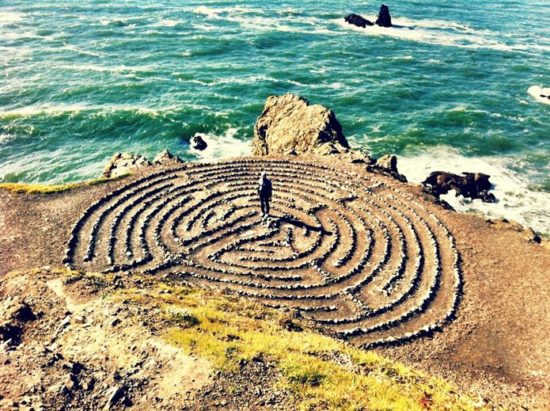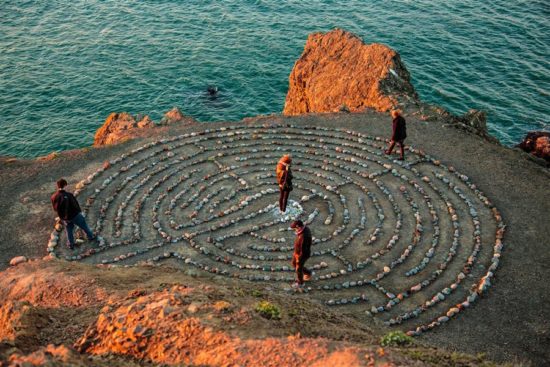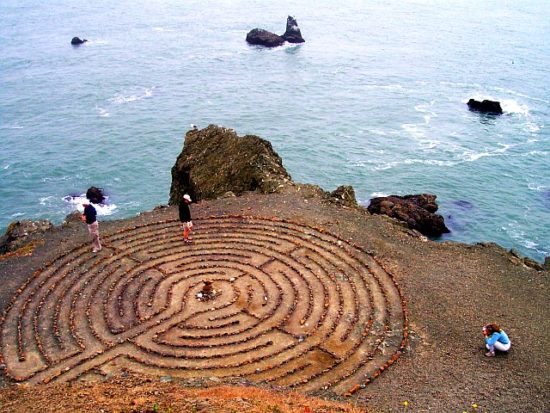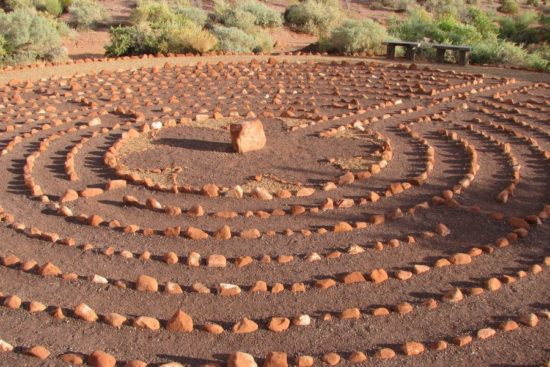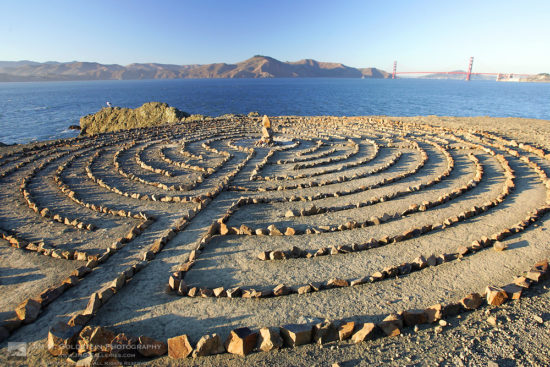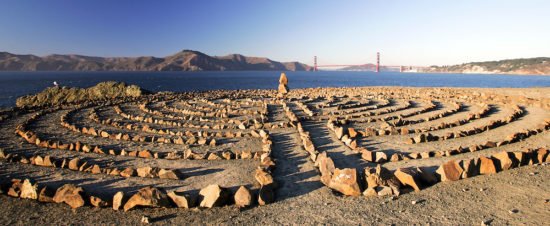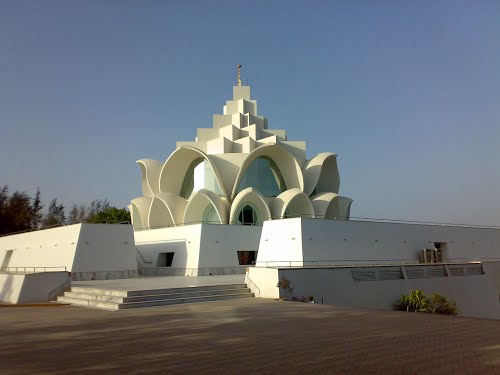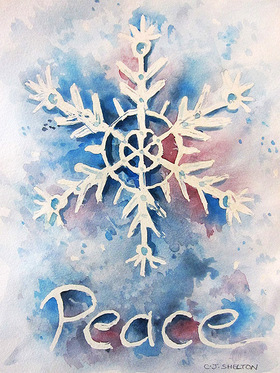Architecture
This Is Interesting
Another Visiting Labyrinth
Labyrinths are not difficult to create, here is a nice one from Knowth.com
Garden Labyrinth with standing stone, the larger stones in the ground (at the front in the photograph) mark the setting sun at the winter solstice, equinox and summer solstice. Three stones on the east of the labyrinth (at the back in the photograph) mark the rising sun at the winter solstice, equinox and summer solstice.
When the Garden Labyrinth was first constructed, the paving bricks were placed on the grass, maintenance was time consuming, so the paving bricks were sunk to be flush with the ground.
The design is a classical 7 circuit labyrinth. The centre was changed so that there are no straight lines, like the entrance stone at Newgrange.
This is how it looks in winter.
Even the cat likes to walk the labyrinth!
On Walking A Labyrinth
There are two basic principles:
- On the labyrinth, everything is metaphor.
- There is no right or wrong way to walk the labyrinth.
Walking the labyrinth is quite personal. There are many different reactions to a labyrinth walk—joy, contemplation, revelation, sadness, elation, etc. Be unselfconscious and give yourself permission to let your reaction be expressed as it chooses—crying, laughing, dancing, singing. There should be absolutely no judgement or embarrassment associated with a labyrinth experience. Don’t be surprised by your reaction. Remember, there is no right or wrong way to walk the labyrinth. Trust Spirit.
With the labyrinth, everything is metaphor—sound, waiting, thoughts, smells, body feelings, witnessing others, etc. Let the experience be what it will be.
The labyrinth is a two-way path. The walk is interactive. Do what feel natural. Follow your own pace. If you lose your way, that’s OK. Think of it as metaphor. It is OK to pass and to be passed. You may want to stop, especially at the switch-back turns. When on the labyrinth, it is important to be considerate. In the center you may want to visit each of the pedals, you may sit or lie down, and can stay for as long as you wish. There is no right or wrong way to walk the labyrinth.
A labyrinth walk is often considered a three fold path. Walking the labyrinth is a time of release, quieting, emptying, shedding (Purgation). Standing in the center is a time of awakening, receiving, opening (Illumination). And the journey out is a time of return, integrating, strengthening (Union). It is the metaphoric path home. Again, on the labyrinth everything is metaphor.
Take your shoes off unless you need them for support or medical reasons. You may want to approach the labyrinth with a centering thought or a question. You can ring a bell, wave a scarf, listen to music, or do what ever during your walk. It is common to make a ritual bow before beginning. When finished, it is again common to acknowledge the labyrinth.
Processing your experience is mostly personal. Keeping silence for a time is one way to do this. Be with your experience, your feelings (especially how you feel in your body), and your thoughts. It may be hard to express your reaction or experience in words so process things internally and symbolically. If you can, you may want to draw or write in a journal.
A Short History of the Labyrinth
The classic eleven circuit labyrinth was laid on the floor of Chartres Cathedral in about 1201. The oldest labyrinth associated with Christianity dates from the 4th Century and is found at Repartus, Orleansville in Algeria.
A labyrinth represents a spiral approach to the Divine, through the three-fold act of release (Purgation), awakening (Illumination), and return (Union). It intentionally evokes the character of a pilgrimage, in the Christian sense a pilgrimage to the Celestial City or Jerusalem. Everything that happens on the labyrinth is metaphor and so it serves as a metaphorical doorway to personal enlightenment. The labyrinth itself is an outward expression of the inward symbol of wholeness.
The classic Chartres labyrinth is an eleven circuit labyrinth which means it is made up of eleven concentric circles connected by thirty-four turns, twenty-eight of which are 180° switch-backs. There are ten axe-like labyrs which occur on the labyrinth. When viewing the labyrinth from above you’ll notice that the labyrs emanate from the labyrinth’s center to the right and left and out the top, thereby forming a Cross with the entry/exit path at the bottom.
The center of the labyrinth is a rosette, the symbol of Mary. It is also evocative of the lotus from Eastern traditions. This rosette has six pedals. One medieval tradition associated the pedals with mineral, vegetable, animal, human, angel, and unknown. The pedals may, however, represent many things collectively or personally.
Around the outside of the classic Chartres labyrinth are one hundred and fourteen lunations—113 cusps and 112 foils—(1 cusp and 2 foils are absent at the labyrinth gate). These are thought to represent the 28½ day lunar cycle and may have been used for as a calendar. The bones of the labyrinth are an invisible thirteen point star.
A Labyrinth Poem
Rows of ragged rocks outline a path for healing?
Brown, decaying leaves hug the winter ground – a blanket to transform?
The labyrinth awaits the sojourner–
almost calls her name–
Will you enter my simple boundaries
and journey my paths
One Step at a Time?
Straight ahead, yet winding and crooked
The curled road beckons to be trod —
reinforcing the uplifted
blessing the downtrodden
Maybe tears, maybe joy, maybe peace
One Step at a Time.
All who are heavy laden, come stand at the gate
All who are fragmented, place one foot down
and the other in front
All who find wonder in the commonplace,
Come travel the narrow rows
One Step at a Time.
Give up your burdens, your middle of the night worries
Lay a care on a silver, craggly rock as you pass
and move on to the next,
the monotony will soothe you
One Step at a Time.
Moving inward,
The trail winds in and out
Muscles untensing,
The walker’s job seems easy,
The cares tumble down
and hit the ground with imagined force
lightening the load on contact
One Step at a Time.
Step 48, step 49, many more follow
while curling toward center like a
snail into its shell
Motionless at last,
a wooden cross is sighted,
God’s presence overwhelms
and envelopes the inner sanctum–
His peace now a cloister
on the journey half over
One Step at a Time.
The pause to discover
new perspectives to ponder
fresh eyes, lightened heart
the world is a wonder
with steps unencumbered
the pilgrimage rewinds
One Step at a Time.
The breathing is slower
the feet touch down lower,
and easier on the road well-worn
The unknown, now familiar
the end is the beginning
the sad is now glory
All happening unexpectedly
One Step at a Time.
A twist inward
A transformation outward
A fresh view from fatigued eyes
All part of a simple design
of much complexity
with the whole greater
than the sum of the steps
All the while traveling
One Step at a Time.
~Suzanne Moody
Visiting Labyrinths
What is a Labyrinth?
The labyrinth is an ancient spiritual tool that has been used throughout the world for over four thousand years. A labyrinth is a circuitous path with one entrance point that leads through a series of switch-backs to its center.
A labyrinth is not a maze. A maze, by contrast, has dead-ends and blind alley ways. Its intention is confusion and mystery. The labyrinth, when followed, leads eventually and without making choices to the center. It is designed for one to find his/her way. The labyrinth may be thought of as a map, but as such it should not be confused with the territory that it represents, that is the inner Being and its relationship with Spirit.
